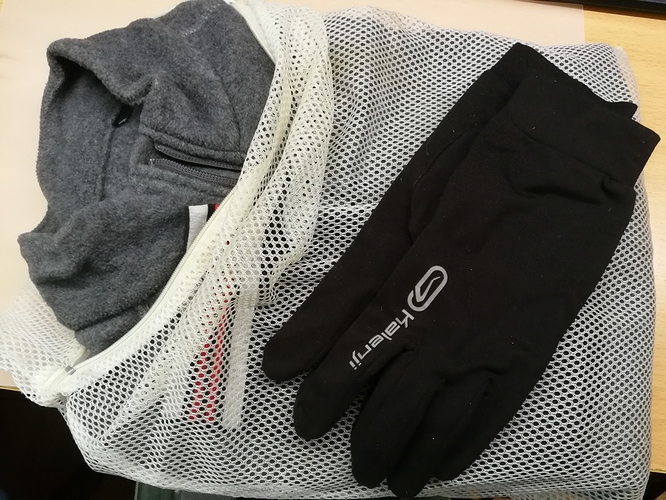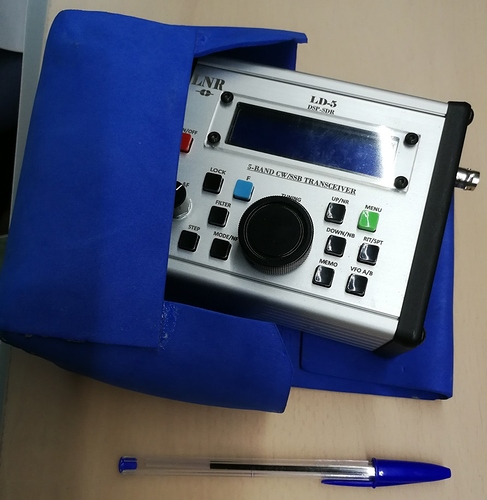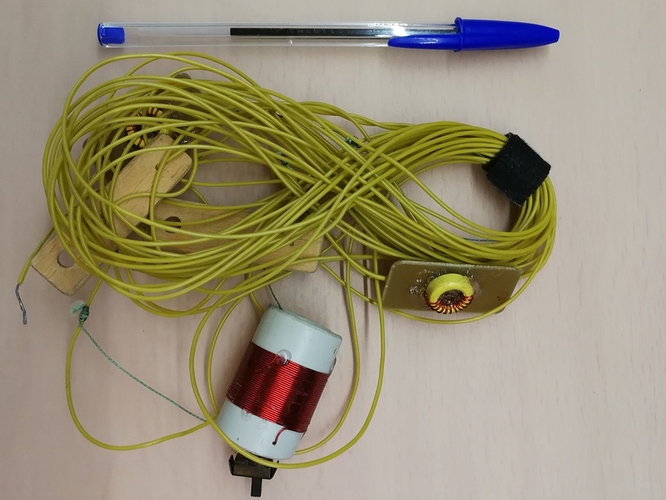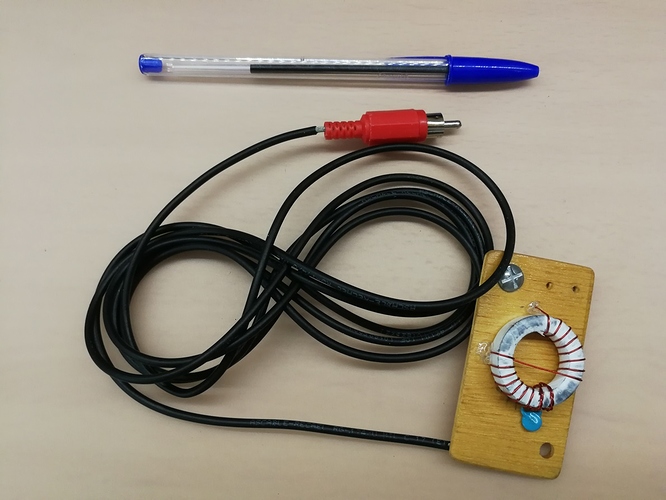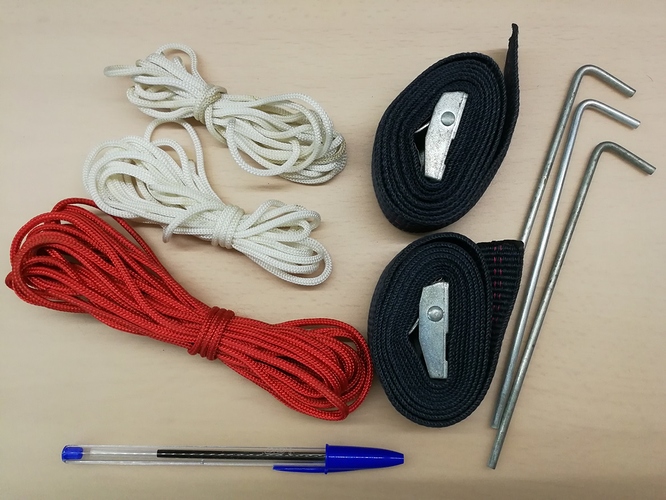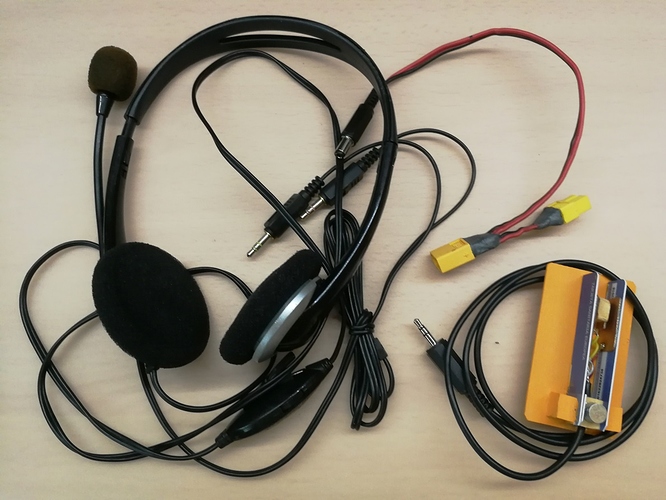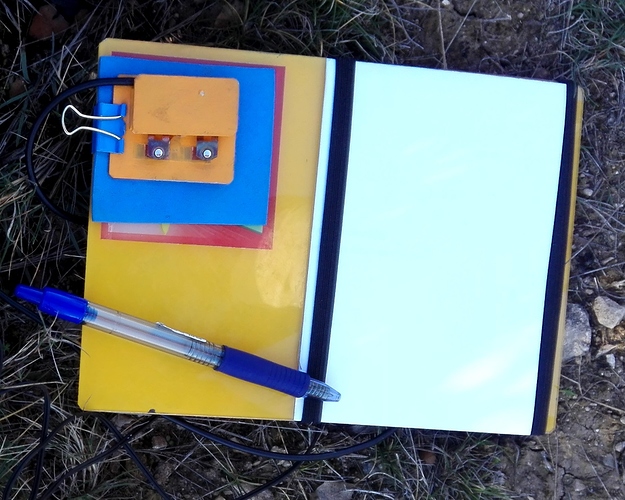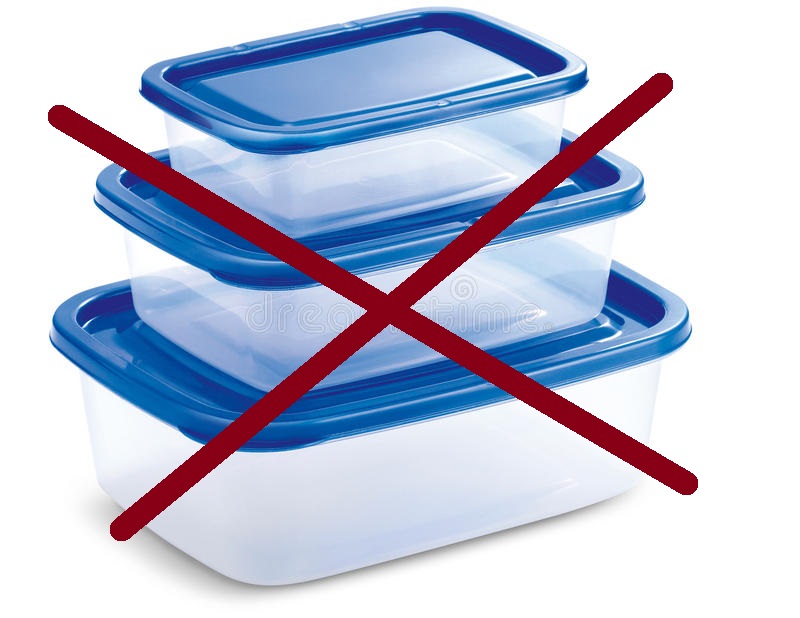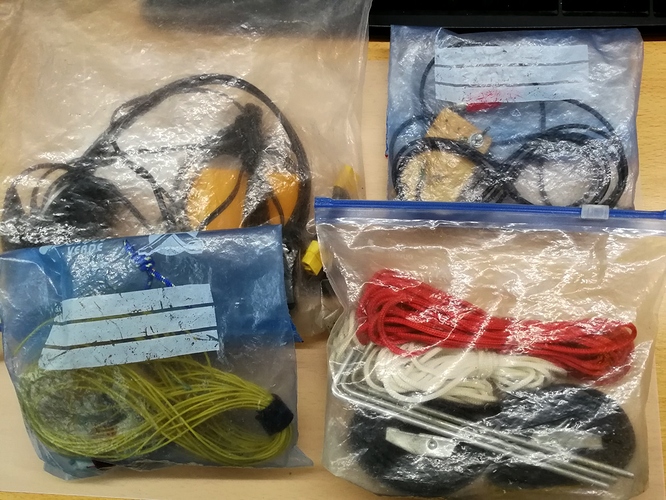I met an Appalachian Trail thru hiker who carried soap and duck tape as a first aid kit. His reasoning was along the lines of, “if I can fix it with that, I need to go to town or get help.” Seemed reasonable to me, especially on the highly trafficked AT.
Duct tape?
If Fred, KT5X, is the racing shell on the lake, then I’m the battleship. Pack weight depends on the peak.
It has run from as low as 10 pounds to as much as 54 pounds, including 8 liters of water, the latter as part of a multi-day 2 peak backpack at the 12K ft. level. Mostly, it runs around 15 pounds.
Ken
You know what, I never knew there was a brand of duct tape called Duck Tape. When I saw references to Duck Tape I thought people were making jokes about duct tape.
Ya live and learn!
Thanks
Andrew
VK1DA/VK2UH
Hi Sabrina,
This is a very interesting point!
Weight is an important point to make my hikes more comfortable. Sooner or later after a number of activations you start asking yourself about the weight in your gear.
Here some of my thoughts:
1) What is the right weight?
I don’t think that is a good approach because there is no single answer for this. Weight is not constant but it will vary depending on the hike (long / short) depending on the weather (warm / cold) and even depending on the activation you will do (VHF only / HF / VHF + HF)
2) Weight is modular
It is more appropriate to consider your rucksack as a sum of several points that depends on various factors:
Extra clothes + Food /drink + Orientation + Safety + Radio gear
Let’s see my items list:
A) Extra clothes: I add some extra weight in winter times. Obviously I need to carry gloves, hat, extra warming layers (a fleece) and a rucksack rain cover. This is at hand in autumn/winter/spring seasons.
In summer time I get rid of most of that; instead I carry a fresh hat, perhaps a mosquite head net and a light coat.
B) Food/drink: depending on the length of the hike I take a small bag of nuts and a water bottle. The simplest can is a light plastic bottle. Remember to replace it often as it degrades…
Amounth of water is also adjusted. Most of the times I carry 0,5 litre and that’s enough but in summer time and when I expect longer distances I carry 1 L or more. I winter I observe I don’t drink much…
C) Orientation: the mountain GPS is always with me plus a spare battery for that. I carry a small compass in a pocket as well. The smartphone is there as well.
D) Safety: I rarely carry anything for that; no first aid kit but I could consider adhesive plasters. I sometimes carried an emergency blanket in case of very long trails in some remote areas.
E) Radio gear.
As said, it all depends if it is a VHF only or HF activation.
If it is a VHF only activation the weight is strongly reduced because I just carry the handheld and perhaps a coaxial homebrew vertical half wave dipole that I hang from a light fish pole. That’s all. I sometimes carried a small hand yagi instead.
Most of the times I carry my VHF handheld + HF gear with me. Along the years I was progressively reducing weight in the HF gear by adopting these measures:
-
Battery: LiPo /LiFEPO4 technology (well discussed in the reflector…). Choose the right Amp capacity to cover your planned activation time. Carrying a 12 Ah batt for a half hour activation makes no sense. Mine use to be a light 3S LiPO 2200 mAh and I never needed more.
-
Radio: I had an FT-817 but I decided to save some weight and replaced it with a LNR LD-5 that weights about half a kilo. If I plan to do a CW only activation then I grab a MTR that is lighter than the VHF handheld!
Radio is protected by a cheap EVA rubber homebrew sleeve. -
HF aerial: decision here is to use a light thin wire. I don’t use a wirewinder, but instead I roll it using my hand to form this stable shape for transportation:
-
Coaxial: I choose a small 2 m length of RG-174 which is very light. I decided to use a RCA conector instead of BNC as well:
-
Cords: I carry 3 cords and tent pegs and a pair of cam buckle tie downs.
-
Fishpole: glass fiber are not very heavy but carbon fiber are even lighter. 5m length is working properly for me.
-
Accessories: I use a cheap PC headset instead of the original microphone. The power plug and a homebrew iambic CW paddle.
-
Log: I refuse to use any electronic logging device. A simple pen and a folded A4 paper on a plastic support is all that I need: I never had a fail.
-
Equipment cases: okay, it could rain and all the gear would become wet. To organise all the above equipment I prefer to avoid using tupperware; it is nice but adds weight.
Instead I use separate zip plastic freezer bags for each part. I use them since years and they are durable:
All in all, my complete winter backpack weights no more than 5 kilo.
In summer time I can replace my robust waterproof 30L rucksack with a lighter one and remove also the gloves and fleece and I carry about 3,5 kilo.
That is of great help!
73 de Ignacio
Sabrina, your question obviously caught the interest of many operators! Congratulations on posting a great query.
While I have been working to shed weight, I err on the side of carrying supplies I hope I never need. In the US we frequently refer to the “10 essentials,” a concept developed decades ago by one of the mountaineering clubs. You can find many descriptions, but this one is quite good.
I read mountaineering accident reports and a frequent comment of the rescued victim is “In retrospect I really wish I had carried _____,” usually referring to a better first aid kit, better navigation (GPS is nice, but so are a map and compass and knowing how to use) extra food, extra water, or extra clothing.
I have another problem. I am 65 years old and have been hiking since I joined the Scouts at age 11. My thought is that if something bad happens, people will think I should have known to be prepared for it!
73
Scott WB8ICQ
I have to agree with Scott regarding the need for 10 essentials in many areas of NA.I belong to a volunteer ground SAR group and see the difference of not having and having, along with using them.
I’m still using my winter pack which yesterday weighed in at 15 kg. My go light summer setup with 1 Li of water weighs in at 4.5 kg. That’s with a KX2, 4 cell LiPo with voltage reducer, Sotabeams mast, 20 mr dipole, 10 essentials, seat, jacket. Hopefully I will start using it by June.
Malen
VE6VID
My apologies for being US-centric. I should have realized that the 10 Essentials were widely used across NA.
With that done: Malen, I am seriously impressed that you can get your summer pack, including the KX2 kit, 10 essentials, and everything else you mentioned, at only 4.5 kg! Can you provide your specifics, please? I can definitely learn from your example.
Tks & 73,
Scott WB8ICQ
Scott, all.
Runners vest (14 li),SOL survival kit and first aid kit. Generally speaking scaling back in size. Sotabeams carbon mast, RG-174.
Every outing I am ready to change the pack contents.
Edit: I do SSB and that’s with no mic. Plan to try built in mic.
Malen
VE6VID
When I was a very young tyke I read " Peter Graves: An Extraordinary Adventure" by William Pene Du Bois. He was an American author of illustrated books for children of all ages, but “Peter Graves” was published in a Puffin edition so it may have been familiar to readers in other countries, especially the UK. The relevant point of the story is that it involves a synthetic metal, Furloy, which becomes lighter than air when a voltage is applied to it. For the almost 50 years I have been backpacking, I have dreamed of a pack with a frame made of Furloy metal. Wire in a 9v battery and backpack weight would become a non-issue.! 
Yeah, I am probably one of the people who overpacks. I’ve improved some over the years, found lighter gear. But just recently I added 1/2 a pound to one of my kits. I use an older former military pack. It is of high quality and quite strong, made to hold up under very adverse and unusual conditions. My son was able to destroy one just like it. He was in a fox hole in Iraq, an 82mm Chinese mortar round dropped in next to him. The explosion shredded the pack, the concussion shattered the screen of his watch, his GPS and his camera. And his ears. But it took that to destroy the pack. Mine will last a lifetime and perhaps my grandson will use it too when I don’t need it anymore.
My pack was never treated that badly. It is older, somewhat faded and could probably use a good cleaning, but it has served me well as a soldier and later. The pack weighs a few pounds empty. Out here in West Texas where summer temps can hit 110° F (43.3° C) and the humidity can be as low as 6%, I start out with a minimum of 1 to 1.5 gallons (3.75 to 5.68 liters) of water weighing 8 to 13 pounds (3.75 to 5.67 kg). I’ve run out of water in the desert. More than once as a soldier, and only once as a civilian. It isn’t fun. And as a civilian there is no excuse for it. But I would rather dump a liter or two at the end of the day than to have some mishap delay my return and run out of water.
As a young trooper a pack weight of 60 to 70 pounds (27 to 32 kg) was not unusual. Presently I try to keep it under 30 pounds (14 kg) as much as possible.
The 1/2-pound I added to the pack recently was worth just at 6 dB of gain. When I am contesting as a mountaintop QRP portable in the VHF/UHF contests, my antennas are 7-ele on 70cm, 4-ele on 2m, and a dipole on 6m. The dipole weighed 2 pounds (0.90 kg) and had no gain. I recently picked up a 3-ele Yagi for 6m. It is optimized for gain, and it weighs 2.5 pounds (1.13 kg). Best of all, it fits in my backpack for easy transport.
Could I shave off a little weight? Probably. Both for myself and my pack in fact. Especially contesting, I carry 4 to 6 Li-Po batteries for the FT-817ND. Like with the water, I’d rather carry a full battery down than have my activity cut short because I expended all my available power. For V/UHF I’ve only got short runs of RG-58, everything is BNC and APP (power poles) for minimum weight. I just don’t want to use RG-174 for V/UHF.
HEY - at least I no longer carry a SLAB to run the transverters, and I no longer carry an amplifier for 2m and 70cm. That took a few pounds off. Last time I ran the contest, I only carried H/Ts for 1.25m and 23cm. They were FM only, but I still got plenty of contacts on both. In fact, 5 grids on 23cm.
Vy73 – Mike – El Paso, Texas.
Pure gold
Yup, Stop blood loss. See
My load out is 25 a 30 lbs. see
Hi Mike
This is a very shocking story!
I hope your son got well after such a traumatic experiance. I understand your point of having a qualitiy backpack. My partner and I bought what looked like a qualitiy military backpack during our vacation in the ukraine last year. It was only used to carry books as my partner went back to beeing a student. One day one of the shoulder straps just got pulled off. I’m glad this happened on the way to the school and not within a 9h hike!
Having a qualitiy backpack is essential.
I carry 2l of water since i ran out of it on a hike last summer. The sun was burning down and i could feel that every part of my skin was sweating and that i’m loosing a big amount of water with it. The situation was not critical but it gave me a taste of how it feels to get dehydrated in the sun.
Since then i plan my water usage during the hike as i drink from one bottle and re fill it with the second bottle. Like this i can make sure to always have some backup water that i will keep for the way back.
73 Sabrina HB3XTZ
Hi Sabrina,
I just weighed mine & it comes in at 5kg
750 ml water
Kx2 & Li Po
A 2 M hand held
Sota-beams antenna end fed 60M to 10 M
7M Sota pole
Roll up slim jim for the 2 M hand held with a 11 meter Rg 174u coax extension
A small assortment of bungee cords
3 pre-made light weight guy ropes in case there is nothing to bungee the pole to.
Headphones
A 2 meter band pass filter for when working on a summit that has repeaters on it.
A small gps unit
A note pad with pens & pencils for hand written logging
Cell phone.
Insect repellant if needed in summer
There is room to put in a jacket a polar fleece top & a beanie if needed.
The maximum time I would be on the trail for would be about 2 hours but most of mine are about an hour, maybe an an hour & a half & I don’t activate in cold, wet conditions.
Rick
ZL3RIK
Hi Sabrina. Yes, my boy is doing well. And he is married to a lady who came from a military family and she knows how to handle his “bad days”.
I was hiking in your country last summer. It was pretty funny actually. My nephew DO5AL was activating with me. We drove from near DM/BM-241 (Northern Bavaria) into HB0 and HB. Our first summit was HB0/LI-012 (Schellenberg). The hike up was nice and easy, and we actually hiked from HB0 into OE, then back into HB0. My nephew Andreas (Andy) was breathing very hard. I was not. So Andy asked me how I was in such good shape. I asked him what our elevation was, and he said 600m. I told him that if I wanted to hike at 600m at home, I would need to dig a hole 600m deep, because my home is at 1,202m ASL. I only carried 0.5L of water in my pocket, it was a very easy hike for me.
Our next summit was HB/SG-064 (St.Iddaburg). That was a very nice summit. I set up along a fence-line near the trees, I was out of the way there. The restaurant owner came out to see my radio, and said the local ham radio club meets up there. I did not carry water on this summit at all, I went to the restaurant and bought a cola. We had a wonderful time in your country. I hope I can hear some HB summits on 2m-SSB when we return in June of 2021.
If you ever come to West Texas, perhaps I can guide you on a few summits.
Vy73 – Mike – KD5KC – El Paso, TX.
My mom’s hip belt once ripped about a mile into a 20 mile backpacking overnight. Luckily we had enough safety pins to get it back together enough to finish the trip. That pack got thrown out afterwards.
So maybe add some safety pins to go with your duct tape and soap ![]()
Sabrina
I am a “weight weenie” when it comes to SOTA. I carry the least weight when activating by bicycle - since the bicycle already weighs 20 lbs. It certainly makes the downhill part more fun doing it by bike. When I bike activate - I carry:
MTR3B and headphones
KX2 Lithium Ion battery
6m carbon fiber SOTA pole from SOTABeams
60 feet of wire wound on a kite winder with an EFHW transformer built into the winder
Everything fits into a saddle bag - and everything including the saddlebag weighs 1640 grams or roughly 4 pounds. On colder days I would wear a 1 lb puffy jacket by Patagonia which also stuffs into the saddle bag when I get warm.
For normal hiking on foot forays during summer - my pack weighs 13.5 lbs when using a KX2. I can pare that down to 10.75 lbs using an MTR3B.
Other than radio gear - my pack weighs 8.25 pounds which include
- a pocket knife
- a compass
- a butane lighter
- spare batteries AA for the hand held GPS
- USB power pack - back up power for phone
- a 10 pack of AA - backup power supply
- a 1 lb Helinox camp chair
- a 1.5 liter bladder
- a SOTA flag
- several energy bars
- a rain jacket (11 oz)
- roll of toilet paper
- 2 head lamps
- trauma wound kit
- TECNU for poison ivy, tylenol, band aid, aspirin, nitroglycerin tablets
- a 2m HT
- bug spray
- a small tent foot print
- the pack itself weighs around 2 lbs - an Osprey EXOS 48 liter
This does not include the weight of water which weighs 2.2 lbs per liter. Winter activating adds more weight (additional layers, gloves, balaclava) but can be traded off with less water weight. That is about the range from a minimalist 4 lbs to somewhere in the neighborhood of 15 lbs (including water) - at least for me.
Ariel NY4G
